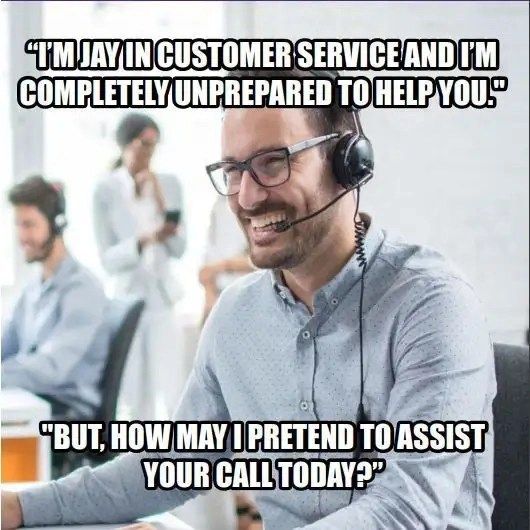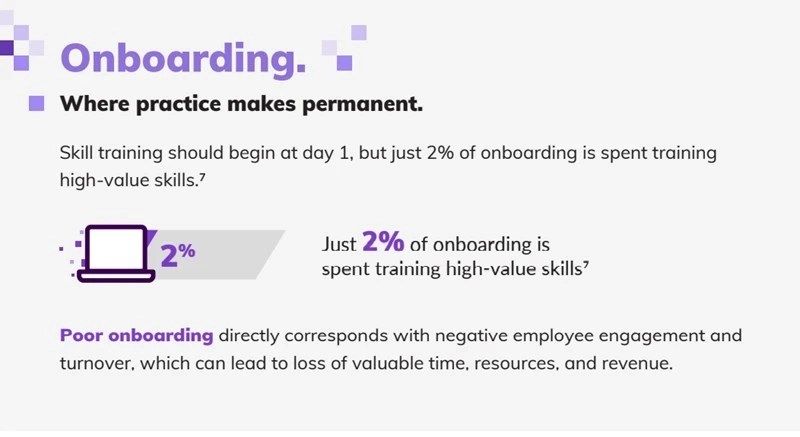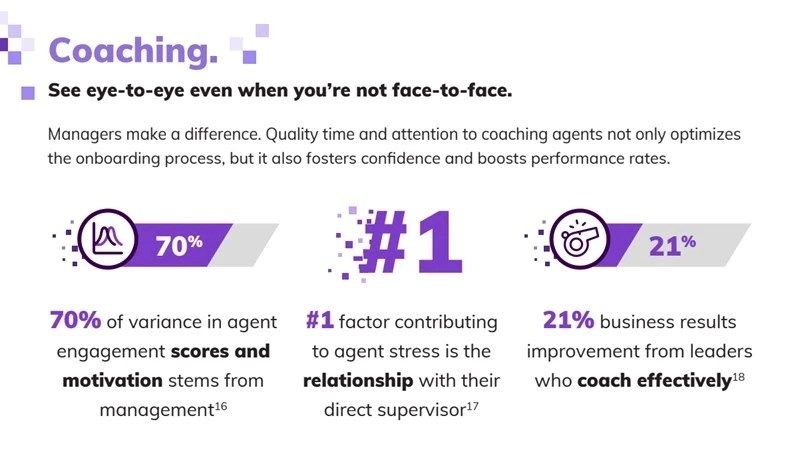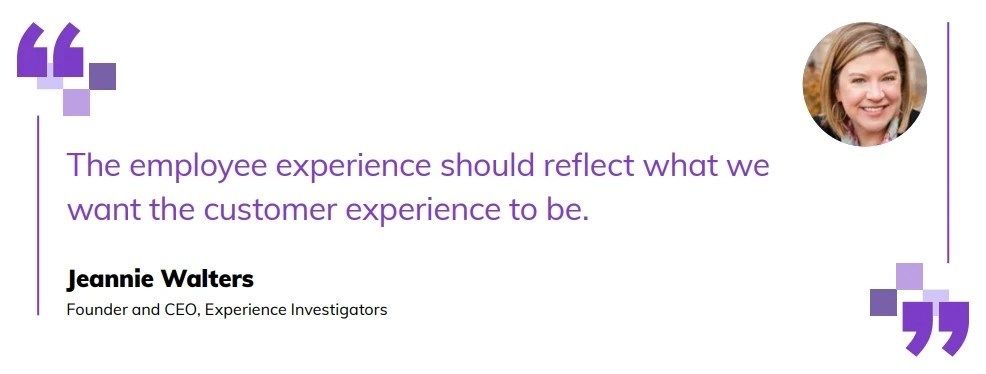

The changing role of contact center agents
There is a renaissance for agents within the contact center. They now handle more complex and digital interactions and are expected to make stronger personal connections with customers on multiple channels. And many agents are continuing to work remotely. That variable alone introduces complexity and challenges that supervisors weren’t dealing with 18 months ago. But that doesn’t mean delivering a good agent experience is impossible. Remote work has certainly blown up years of coaching best practices, but with the right workforce engagement tools in place, supervisors can continue to train agents remotely, even if they can’t physically walk the floor.Let's take a closer look at what is happening behind the scenes that is dictating the need for supervisors to implement new technology that helps agents develop and improve.
- More complex interactions. Digital customer journeys don’t begin with an agent. Your customers have already conducted searches online and visited your website or app, so if it’s coming to a human agent, it’s safe to assume that support issues go beyond easy fixes. This means that agent support is more complex than ever—a trend that is here to stay due to the increasing adoption of customer self-service. Perhaps, as a result, 52% of companies view the ability to handle complex products and processes as an essential employee characteristic.
- Relationship builders. Contact center agents have always been encouraged to build rapport, but expectations have evolved. Now, agents are expected to establish deeper, personal connections that can strengthen long-term customer relationships. This requires proficiency in soft skills such as empathy, active listening, and demonstrating ownership. Unfortunately, training curriculums tend to shortchange these crucial character traits. For example, ICMI found that only 2% of onboarding training is spent training high-value soft skills.

- Digital channel support. The proliferation of digital channels such as social media and chat has also required agents to acquire new skills. In addition to solid writing skills, digital agents need to be digitally savvy, which can be intimidating to learn. For example, an agent who has never used Twitter might be a little traumatized when their tweet in response to a customer complaint triggers an angry mob. Nonetheless, digital skills are essential in the modern contact center. Unfortunately, Forrester Consulting found that "41% of respondents believe their employees are concerned that their existing digital skills may not match what their job will require in the future."
- Remote work. The pandemic forced organizations to rapidly adopt remote and hybrid work models, and now that businesses and agents have experienced the benefits, many agents will continue to work from home. However, a common concern remains: It’s more difficult to train and upskill remote workers. This is simply not true. With the right tools, supervisors have as much visibility into performance and behavior as they do with agents in a brick-and-mortar call center. Those tools not only identify and ensure skill gaps are being addressed, but they also improve the employee experience, foster higher engagement, and help them be successful. In an era of job switching and resignations, known as “The Great Resignation,” empowering employees mitigates great talent walking out the door.

Elevated agent responsibilities and a dispersed workforce make it crucial for contact centers to always be on the alert for development gaps. Fortunately, workforce engagement, workforce optimization, and analytics tech—which are part of all modern CCaaS platforms—can be leveraged to help ensure you're targeting your training on the right topics and agents.

Keys to identifying employee coaching opportunities
Contact centers need to regularly assess where agent skills can be improved and prioritize training topics based on their evaluations. Here are three keys to success:1. Analyze interactions on every channel
If your contact center offers multiple channels but focuses most of your quality assessment on voice interactions, you're doing it wrong. Why? Because you’re missing out on important employee coaching and training opportunities that cover the gamut of customer engagement channels. Written digital interactions are a very different animal than phone calls and have their own quality standards.Interaction analytics software can analyze all interactions from all channels, including cross-channel transactions, to ensure contact centers don’t miss training opportunities. Managers should leverage these capabilities to categorize interactions based on discussion topics, frustration detection, and expressed sentiment to see where issues are occurring and what causes them.As an example, customer sentiment scores can highlight underperforming agents. Further analysis can pinpoint specific training opportunities for these agents. Targeted agent training is much more effective than using a shotgun approach and will strengthen the overall quality of CX.2. Coach in the moment
Does this scenario sound familiar? Following a particularly poor QA evaluation on a voice interaction, supervisor Sue coaches agent Adam, who has no recollection of the call because he's handled 90 more calls since the interaction took place. And To make matters worse, the (former) customer has already switched to your competitor.The typical QA process includes pulling a small sample of interactions and coaching agents after the fact, sometimes days later. There are a few problems with only using this approach:- It's likely not all training opportunities are identified due to the small sample size
- Lack of real-time agent coaching means agents don't have the opportunity to change the outcome of the interaction
- The time delay between the interaction and the coaching means the agent may have continued the undesirable behavior (how many of those 90 calls did agent Adam flub?)
3. Tailor training to agent needs
Voice and digital channels capture huge amounts of data about agent behavior and performance. And supervisors have more tools than ever to use this data to identify training opportunities for every agent, including those who work from home.A common contact center theme is that when conversion rates are down, leaders will conduct a refresher training for every single agent. Even the ones who are overperforming. Is this the right way to approach training? Probably not.Training is most effective when the right agents receive the right training. For example, agents with below-target conversion rates should receive sales process refresher training, but high-performing agents will probably find it a waste of time. Keep them on the phones or use them as examples for other agents.Advanced tools such as interaction analytics, AI-infused quality management analytics, and real-time interaction guidance software provide insights into agent performance. Thus, supervisors can zero in on both group and individual needs and apply the training to where it will make the most impact. Using these tools results in a more comprehensive view into opportunities while optimizing agent time and training resources. It can also increase employee engagement when training is tailored to their skill gaps.
Ready to optimize onboarding, coaching, and training?
Today's consumers expect a lot from businesses, especially customer service functions. One sub-par contact center interaction can result in a lost customer. This reality makes it vital for agents to continuously sharpen their skills through targeted training. To maximize training results, call center leaders should analyze interactions from all channels, coach in the moment, and tailor training to agent needs.Training agents to be digitally fluent is a widespread opportunity. To get you started, download "The Ultimate Guide to CX Agents: Hiring, Training, Onboarding, and Measuring Contact Center Agents in a Post-Pandemic Digital World." This eBook is packed with insights from industry experts that will help you optimize your agents' skills.i Customer Contact Week Digital: 2021 June Market Study: Customer Contact Industry Review (2021)
iii Forrester: The Future of Work is Still Being Written: But Who Is Holding the Pen? (2020)









